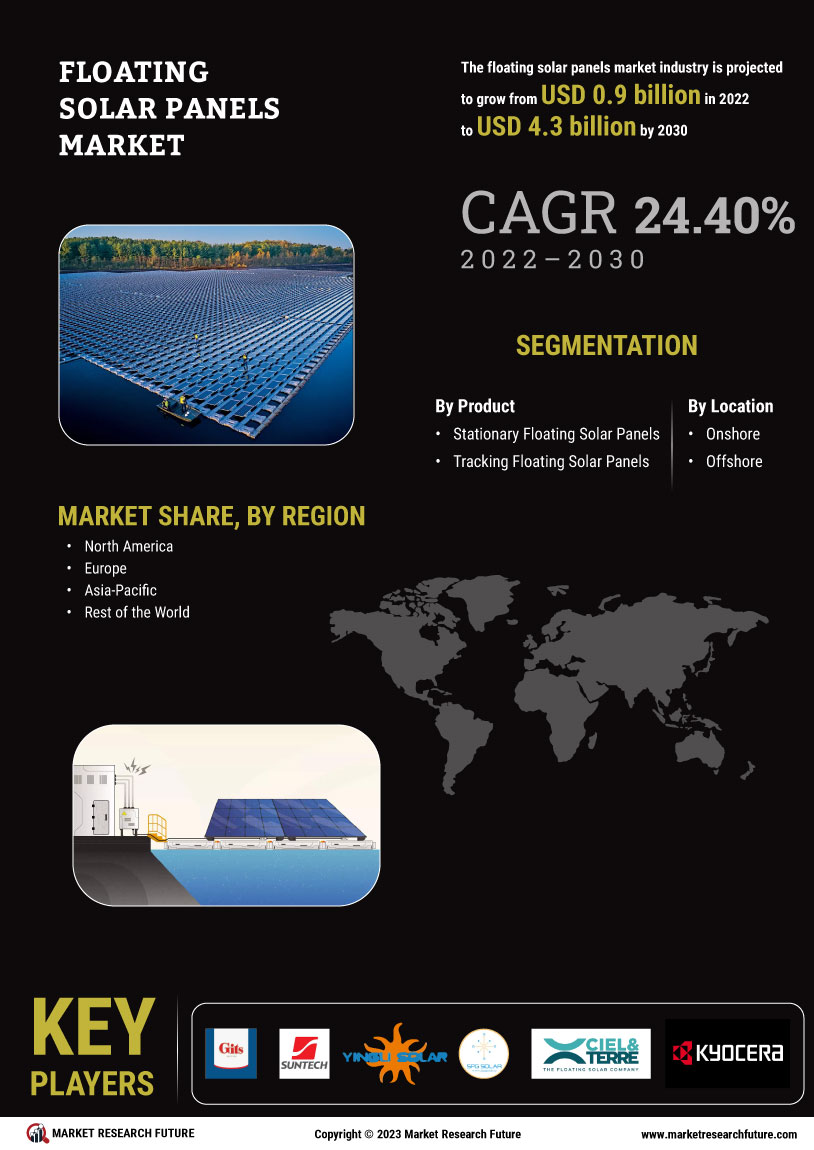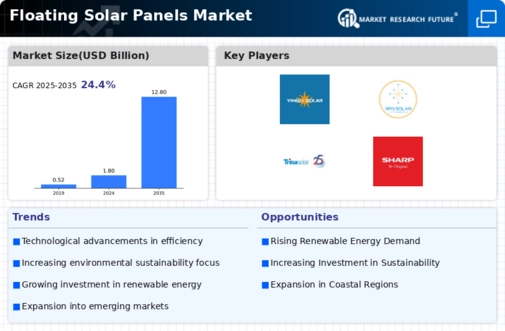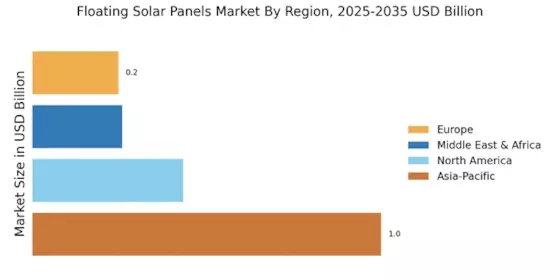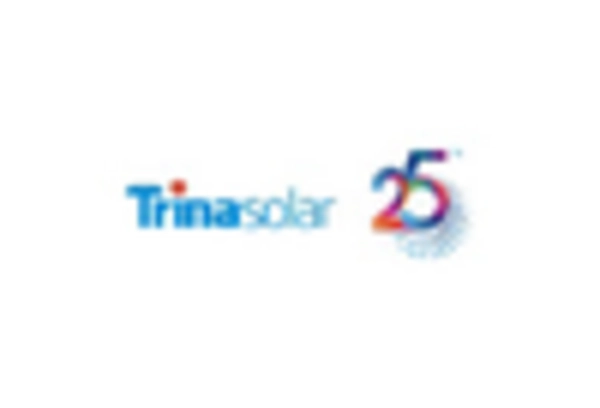Rising Energy Demand
The increasing The Floating Solar Panels Industry. As populations grow and economies expand, the need for sustainable energy sources intensifies. Floating solar panels offer a unique solution by utilizing water bodies, which are often underutilized for energy generation. According to recent estimates, energy consumption is projected to rise by approximately 30% by 2040. This surge in demand necessitates innovative solutions, and floating solar technology appears to be a viable option. By harnessing solar energy on water surfaces, this technology not only meets energy needs but also reduces land use conflicts. The Floating Solar Panels Market is thus positioned to benefit from this escalating demand, as it provides a dual advantage of energy generation and land conservation.
Technological Innovations
Technological innovations are significantly influencing the Floating Solar Panels Market. Advances in solar panel efficiency, buoyancy materials, and energy storage solutions are enhancing the feasibility and attractiveness of floating solar installations. Recent developments indicate that solar panels can now achieve efficiencies exceeding 22%, which is a notable improvement. Additionally, innovations in anchoring systems and monitoring technologies are making it easier to deploy and maintain floating solar farms. These advancements not only improve the overall performance of floating solar systems but also reduce operational costs. As technology continues to evolve, the Floating Solar Panels Market is expected to experience increased adoption rates, driven by the enhanced reliability and efficiency of floating solar solutions.
Environmental Sustainability
The growing emphasis on environmental sustainability is a significant driver for the Floating Solar Panels Market. As climate change concerns escalate, there is a pressing need for clean energy solutions that minimize ecological footprints. Floating solar panels offer a unique advantage by reducing water evaporation and improving water quality in reservoirs. Moreover, they do not require land clearing, thus preserving natural habitats. The environmental benefits associated with floating solar technology align with global sustainability goals, making it an attractive option for governments and corporations alike. The Floating Solar Panels Market is likely to thrive as stakeholders increasingly prioritize environmentally friendly energy solutions that contribute to a sustainable future.
Government Incentives and Policies
Government incentives and supportive policies play a crucial role in propelling the Floating Solar Panels Market. Many governments are increasingly recognizing the importance of renewable energy in achieving sustainability goals. As a result, various financial incentives, such as tax credits, grants, and subsidies, are being introduced to encourage the adoption of floating solar technology. For instance, certain regions have implemented feed-in tariffs that guarantee fixed payments for energy produced from floating solar installations. These initiatives not only lower the financial barriers for investors but also stimulate market growth. The Floating Solar Panels Market is likely to see accelerated expansion as these favorable policies create a conducive environment for investment and innovation in floating solar technologies.
Water Scarcity and Land Use Conflicts
Water scarcity and land use conflicts are emerging challenges that the Floating Solar Panels Market addresses effectively. As urbanization and agricultural demands increase, competition for land resources intensifies, leading to conflicts over land use. Floating solar panels provide a solution by utilizing water surfaces, thereby alleviating pressure on terrestrial land. This is particularly relevant in regions facing severe land shortages. Furthermore, floating solar installations can coexist with other water-based activities, such as fishing and recreation, creating a harmonious balance. The Floating Solar Panels Market is poised for growth as it offers a practical response to these pressing issues, enabling energy generation without compromising land availability.


















Leave a Comment